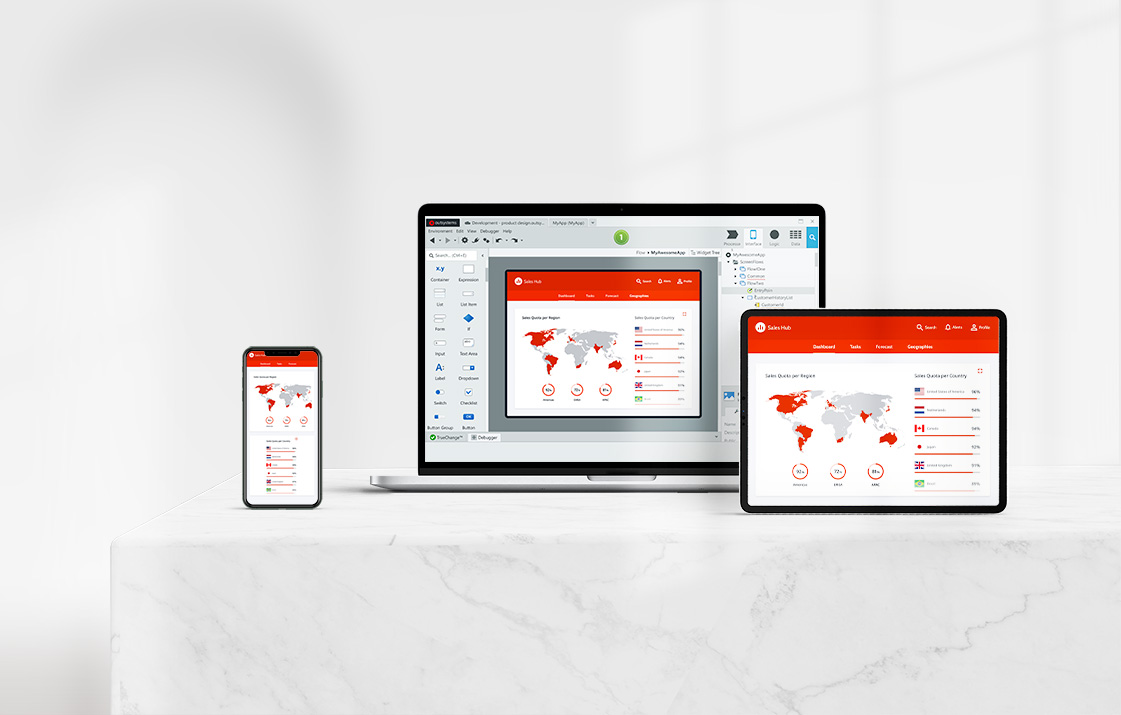This model achieves a platform that provides a response that is efficient and sustainable over time, and agile regarding the needs of the business.
The digital transformation has experienced a qualitative and quantitative leap over the last year. The pandemic has caused technology to become an essential element in companies and digitalisation in organisations to have received a strong boost. In this context, it is now essential to generate efficiencies, develop new services and reduce the time to market, a series of elements that are necessary in order to remain competitive. This acceleration in the digital environment has turned companies into software companies, with a notable increase in the requests for creation and development of new applications, or update of those existing. It has also boosted the Low-Code development with an alternative for improved efficiency and agility.
This increased demand for applications is causing a bottleneck in the development areas. This is particularly relevant in companies with a strong culture of manual development or High Code, core systems that must be renovated or a high technological heterogeneity that requires significant integration efforts.
Altia, a Spanish technology consultancy agency and part of the Partner Program of OutSystems, in collaboration with IDG Research and OutSystems, explains the 5 main advantages of the leap towards Low-Code with the objective of helping companies to cover the needs of yesterday, today and the future in order to become a business enabler and achieve the organisation’s objectives. This is a platform that permits the creation of tailor-made solutions with accelerated software development thanks to graphic user interfaces in record time and at a low cost, and which is establishing itself as an alternative in order to provide an efficient, sustainable and agile response to the business’ needs.
1. Develop the application you need in record time: The highest agility when it comes to undertaking the development combines with reduced barriers during development, as it allows the business units themselves to create their applications without the need to depend on IT departments. With Low-Code, the role of these technology areas moves from being the centre of development to being a centralised control organisation that orchestrates the various projects in the other areas and avoids the proliferation of applications without a suitable purpose.
2. Increase productivity x3: In certain scenarios, the efficiency of this technology multiplies, such as in the development of applications for omni channel environments where different developments are traditionally required for the web and mobile channels, and where different development teams are also needed, each specialised in one channel. With Low-Code, this aspect becomes significantly more simple, allowing a single development to offer the widest range of digital experiences, whether via web, mobile, APIs, web services, chat, SMS...

3. Embeddable with current and future solutions: The main software manufacturers have started to embed Low-Code into their offer in order to bring the development closer to the final user and include it in the work station, which has generated a considerable boost to the interest in this technology. Companies have started to experiment and undertake their first projects and this interest will lead to an expansion of Low-Code in the coming years, moving from peripheral use to the core of the business. According to Gartner, we will see that 65% of software development will include Low-Code in 2024.
4. No specialised knowledge required: As this is a graphic development interface which is not manual, it is not necessary for those undertaking the development to be experts in this area. Also, it allows easy visualisation of the results of the work before it is finished, which facilitates and streamlines the creation of the application by non experts. The developer can focus more on the application’s value to the final user and less on the execution of the code.
5. Facilitates team work: With the improvement of the readability of the code, anyone who has not been involved in the development can see and understand its status at a glance and continue working on it. Also, in the case of a full-stack solution, it is possible to embed it into existing systems, giving developers the capacity to extend projects beyond the IT department and involve other departments and teams.
In short, this is a platform that will provide benefits for both the business and the IT department by creating the applications needed to improve the organisation in record time and in a sustainable way over time.
